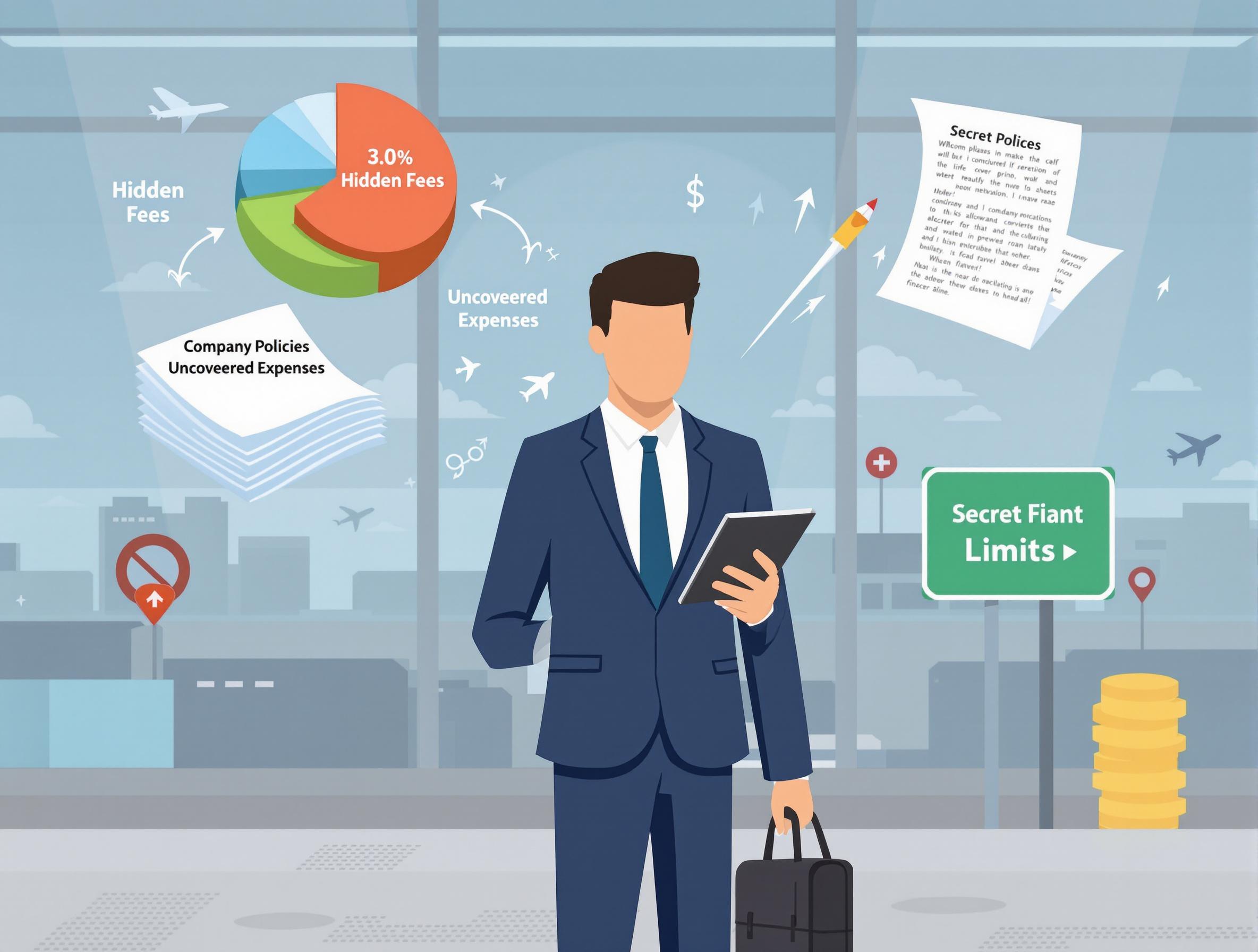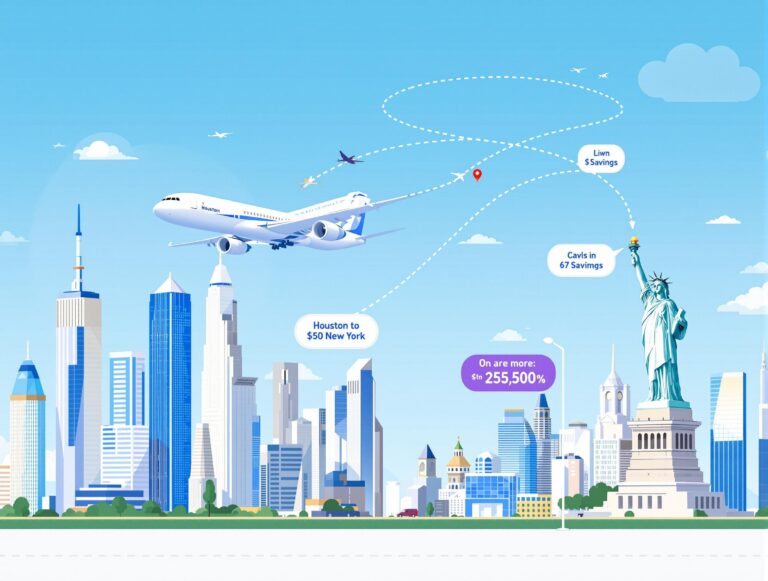Traveling Allowance: 6 Secrets Companies Don’t Tell You
Table of Contents
Navigating the intricacies of travel allowances can unlock a world of savings and efficiency for business travelers. This blog post reveals six secrets about travel allowances that companies often keep under wraps, offering insights into maximizing your travel budget and streamlining travel expense management. Discover how understanding these hidden elements can solve common problems faced during business trips and enhance your overall travel experience.
Understanding the Basics of Traveling Allowance
What is a Traveling Allowance?
Traveling allowance serves as a crucial component of modern business practices, playing a significant role in travel expense management. Essentially, it is a financial provision given to employees to cover costs incurred during business trips. This includes expenses for transport, accommodation, meals, and other incidental costs that arise when employees are on the road representing their company. The aim is to ensure that employees do not have to foot the bill for business-related travel out of their own pockets. By providing a clear framework for reimbursing travel expenses, companies not only protect their staff from unexpected financial burdens but also maintain a streamlined approach to managing travel costs. Have you ever wondered how your company handles travel allowances and if it’s in line with industry practices?
The Importance of Traveling Allowance in Business Travel
Traveling allowances are not just a matter of convenience; they are a vital part of business travel management that directly impacts employee satisfaction and productivity. When employees know they will be reimbursed for reasonable expenses, they can focus on their work rather than worrying about finances. This assurance fosters a sense of security and loyalty, encouraging employees to perform their best during business trips. Moreover, a well-structured travel allowance policy can help businesses control their travel budgets by setting clear guidelines on what constitutes acceptable expenses. It also simplifies the reimbursement process, reducing administrative burdens and ensuring prompt payments. How might improving your company’s travel allowance policy enhance both employee morale and fiscal efficiency?
The True Cost Coverage: What Companies Won’t Tell You
Hidden Fees in Traveling Allowances
Navigating the labyrinth of travel allowances can often feel like a game of hide and seek, where the rules keep changing. While companies may boast about generous travel allowances, they often leave out the part about hidden fees that can quickly add up, leaving employees out of pocket. Many businesses leverage complex travel expense management systems that mask additional costs, such as processing fees and currency conversion charges. These extra expenses can erode the perceived savings, turning what seemed like a cost-efficient solution into a financial burden. If you’ve ever wondered why your reimbursement falls short of your expectations, it’s likely due to these stealth charges. To ensure you’re not caught off guard, always scrutinize the fine print of your company’s travel expense policy. Have you ever encountered unexpected charges? Share your experiences and insights on how you managed them.
Uncovered Personal Expenses
While on a business trip, employees often find themselves shelling out money for personal expenses that aren’t covered by their travel allowance. From meals exceeding the daily limit to local transport that doesn’t qualify for reimbursement, these out-of-pocket costs can add up quickly. Companies might not highlight these limitations in their business travel management policies, leaving staff to discover them the hard way. For instance, the daily stipend might seem generous, but it often covers only the basics, with any indulgence in local cuisine coming straight from your wallet. To navigate these uncovered expenses, it’s crucial to plan meticulously and keep track of every expense. By doing so, you can identify areas where you might need to negotiate for better allowances with your employer. Are there personal expenses you’ve had to cover during work trips? Let’s discuss strategies to minimize these costs and ensure you’re adequately compensated.
The Secret Limits and Caps on Allowances
Exploring Hidden Caps
Navigating the complex world of travel allowances can reveal unexpected caps that companies may not openly discuss. These hidden limits often stem from strategic travel expense management tactics aimed at keeping corporate expenditures in check. While the surface might suggest generous allowances, the fine print could delineate specific caps on categories like meals, accommodations, and even specific destinations. Many businesses impose these thresholds to encourage more frugal spending habits among employees. Being aware of these subtleties can prevent any unwelcome surprises on your expense report. To ensure you aren’t caught off guard, always review the detailed policy documents provided by your company or consult with your HR department. By understanding these hidden caps, you can strategize better and prevent any unforeseen expenses. Have you ever encountered an unexpected cap on your travel expenses?
How to Fully Utilize Your Allowance
Maximizing your travel allowance can be an art form, especially when navigating the complexities of business travel management. To make the most out of your allotted budget, start by meticulously planning your itinerary and researching cost-effective travel options. Opt for advance bookings to avail of early-bird discounts on flights and accommodations. Additionally, consider enrolling in loyalty programs which often provide added perks or discounts. Always keep an eye on promotional offers which can stretch your dollar further. It’s also beneficial to utilize technology, such as travel apps, to compare prices and manage your expenses on the go. By taking these proactive steps, you ensure that each dollar of your travel allowance is spent wisely and effectively. What strategies do you use to make the most of your travel allowance?
The Fine Print: Conditions Attached to Allowances
Understanding Company Policies
When it comes to travel allowance, many companies have intricate policies that may not be immediately obvious to employees. These policies often involve specific guidelines about what constitutes eligible expenses, such as transportation, accommodation, and meals. Understanding these guidelines is crucial for effective travel expense management, as it helps employees optimize their business travel management strategies. For instance, some companies might have particular partnerships with hotels or airlines, which can significantly impact the choice of accommodation or flight bookings. Familiarizing oneself with these policies not only ensures compliance but also helps in maximizing the benefits of the travel allowance. It’s always a good practice to consult the HR department or check the employee handbook to clarify any uncertainties. Have you ever experienced a situation where understanding these policies made a significant difference in your travel reimbursement?
Exceptions and Exclusions
While companies offer travel allowances to ease the burden of business trips, they often come with a list of exceptions and exclusions that employees need to be aware of. These might include restrictions on luxury accommodations or limits on daily meal expenses, requiring employees to stay within a specific budget. Certain expenses, like personal entertainment or travel insurance, might also be excluded from reimbursement. Being unaware of these exceptions can lead to unexpected out-of-pocket expenses, affecting the overall travel expense management. Therefore, it’s essential to meticulously review all the terms and conditions associated with the travel allowance before embarking on a business trip. This diligence not only prevents misunderstandings but also ensures that employees can focus on the business objectives of their travel. Have you ever encountered any surprising exclusions in your company’s travel policy that affected your trip?
The Role of Business Travel Management in Allowances
How Management Strategies Affect Allowances
When it comes to business travel, the unseen strategies of travel management can significantly impact travel allowances. Companies often employ sophisticated business travel management systems that help them craft allowances that maximize efficiency while minimizing costs. By analyzing travel patterns and expenses, these management strategies can determine the optimal allowance amounts, ensuring employees have enough to cover essential costs without incurring unnecessary expenditures. This careful balancing act often means that employees might not realize how much negotiation goes into their travel budgets. As businesses continually refine their travel policies, it’s essential to understand these strategies’ nuances to make the most of your travel allowance. Are you maximizing your travel budget, or are there hidden optimizations you could leverage?
Integration with Travel Expense Management
The integration of travel expense management with travel allowance strategies offers a comprehensive approach to handling business trips. Effective travel expense management ensures that allowances are not just numbers on paper but actively align with actual expenditures, encouraging accountability and cost-efficiency. With sophisticated tools and software, businesses can track expenses in real-time, allowing for immediate adjustments and clearer oversight. This integration means that every dollar is accounted for, preventing excess spending and identifying potential savings. Furthermore, it can alleviate some administrative burdens, freeing up time for more strategic tasks. As an employee, understanding how these systems work can empower you to navigate your expenses more effectively. Are you aware of how your company’s expense systems are impacting your travel experience?
Tax Implications and Allowance Deductions
Understanding Taxable and Non-Taxable Allowances
Navigating the murky waters of travel allowances can be a daunting task, especially when it comes to understanding which parts are taxable. Many employees are surprised to discover that not all allowances are created equal. Certain travel-related expenses, such as accommodation and meals, may be considered taxable if they exceed the per diem limits set by tax authorities. On the flip side, some companies structure their travel allowance packages in a way that certain components remain non-taxable, offering a financial relief to business travelers. It’s essential to be well-informed about these distinctions to avoid unexpected tax liabilities. Are you familiar with the specific allowances your employer provides, and how they affect your tax returns? It’s time to take a closer look and ensure you’re maximizing your travel allowance benefits.
Strategies for Better Tax Management
When it comes to travel expense management, adopting effective strategies can significantly reduce tax burdens. One crucial approach is to maintain impeccable records of all travel expenses. This includes keeping receipts, tracking mileage, and noting the purpose of each trip. Another effective strategy is to engage with a tax professional who understands the nuances of business travel management. They can offer valuable insights into tax deductions you might be overlooking, potentially leading to substantial savings. Many former employees have shared insider tips, revealing how strategic planning can lead to better financial outcomes. Consider the potential tax savings you might achieve by optimizing your travel expense management. Are you ready to explore these strategies and possibly reduce your tax bill?
Maximizing Your Traveling Allowance
Tips to Stretch Your Allowance
When it comes to making the most of your travel allowance, a little creativity goes a long way. Start by planning your business trips well in advance to secure the best deals on flights and accommodations. Consider using travel apps that offer discounts for business travel management, and always check for corporate rates when booking hotels. Opt for public transportation or carpooling whenever possible to save on travel expenses. Meal allowances can also be stretched by choosing local eateries over expensive hotel restaurants. Keeping track of every expense through a detailed log or an expense management app will help you identify potential savings. By implementing these strategies, you can make your travel allowance work harder, offering you more flexibility and control over your business travel budget. Don’t forget to share your travel expense management tips with colleagues to foster a culture of smart spending within your organization.
Negotiating Better Terms with Your Employer
Negotiating your travel allowance can significantly enhance your business travel experience. Start the conversation by presenting data that highlights the average costs of travel in your industry and how your current allowance compares. Use examples from former employees or testimonials from peers to illustrate the benefits of a more generous travel package. It’s also important to emphasize how a well-structured allowance can lead to enhanced productivity and satisfaction, ultimately benefiting the company. Be open to negotiating other terms, such as flexible travel schedules or bundling allowances with other benefits. Demonstrating how these changes can lead to better business travel management might make your employer more receptive to adjustments. Always approach the discussion with a clear understanding of your needs and how they align with the company’s goals. Consider asking, “What adjustments can be made to optimize my travel experience while maximizing company resources?”
Conclusion
The exploration of travel allowances uncovers a layered aspect of business travel that is crucial for both employees and employers. Understanding the intricacies of travel expense management not only saves money but also boosts employee satisfaction and productivity. By identifying hidden fees, personal expenses, and the often-unnoticed caps on allowances, employees can better navigate the financial landscape of business travel. Moreover, being aware of the tax implications and potential strategies for better tax management provides an opportunity to maximize benefits without unnecessary burdens.
Implementing effective strategies to stretch your travel allowance, such as leveraging technology and negotiating better terms with your employer, can significantly enhance your travel experiences and financial outcomes. As you delve into this vital aspect of business travel, consider sharing your experiences and tips with peers to foster a culture of efficient travel management within your organization. What challenges have you faced with travel allowances, and how have you overcome them?
For further insights and tips on optimizing your business travel, check out our related articles on travel expense management and business travel strategies to make every trip a success.
FAQ
1. What exactly is a travel allowance, and how does it benefit employees?
A travel allowance is a financial provision given to employees to cover costs incurred during business trips, such as transport, accommodation, and meals. It benefits employees by ensuring they do not have to cover business-related travel expenses from their own pockets, allowing them to focus on their work without financial concerns.
2. How can companies optimize travel expense management to save costs?
Companies can optimize travel expense management by setting clear guidelines for acceptable expenses, using advanced software to track and analyze travel patterns, and negotiating corporate rates with hotels and airlines. These strategies help in controlling travel budgets, simplifying reimbursements, and reducing unnecessary expenditures.
3. What are some common elements included in a business travel management policy?
A business travel management policy typically includes guidelines on eligible expenses for transportation, accommodation, and meals, as well as exceptions and exclusions. It may also specify partnerships with certain hotels or airlines and detail reimbursement processes to ensure clarity and efficiency.
4. Are there hidden secrets about travel allowances that employees should be aware of?
Yes, hidden aspects of travel allowances include unexpected fees like processing charges and currency conversion costs, as well as caps on certain expenses. Employees should carefully review company policies to avoid being caught off guard by these stealth charges.
5. How can I ensure my travel expenses are fully reimbursed by my company?
To ensure full reimbursement, employees should meticulously track all expenses, adhere to company policy guidelines, and submit detailed reports with receipts. It’s also advisable to consult with the HR department to clarify any uncertainties regarding eligible expenses before traveling.
References
[1] – https://www.buzzfeed.com/hannahloewentheil/people-sharing-insider-industry-secrets
[2] – https://www.rd.com/list/airlines-wont-tell-you/
[3] – https://workplace.stackexchange.com/questions/11681/how-to-inquire-and-ask-for-traveling-allowance-and-benefits-for-going-out-of-the




